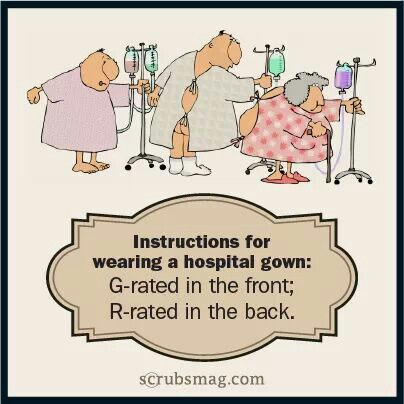Modesty in healthcare seems like an oxymoron. There are so many cartoons and comics poking fun at someone’s uncovered backside, and just about everyone can share an experience about being “exposed” in a healthcare setting. Modesty in healthcare: privacy is urgently needed. The lack of modesty protection in healthcare is a troubling issue, especially for those who have suffered from sexual assaults, physical disfigurement/deformity, those with strong religious or cultural beliefs relating to modesty, children and teens, individuals transitioning, and those with poor body image and are prone to embarrassment. Unfortunately, modesty and privacy in healthcare are in short supply and are known barriers keeping patients from seeking care and treatment.
Modesty is learned through culture, religion, and community standards. It is often associated with discouraging sexual attraction, a sign of respect, and modesty standards vary widely. Too often in healthcare, modesty has not been a key issue for healthcare professionals, and in some cases that fosters the relationship divide between the healthcare professional and patient. Clinical convenience has outweighed the patient’s expectations for dignity, modesty, and privacy.

Lack of modesty in healthcare is anxiety-provoking
Seeking medical care or diagnostic testing are anxiety-producing events. That anxiety is magnified for individuals with modesty and body image issues. The sentiment expressed by some patients is that the thought of being exposed (even under anesthesia), is a loss of self-control. The fear of potentially having their privacy violated can contribute to a delay in seeking care and treatment. These anxiety issues are not skewed by sex, age, or religion.
Modesty: Keeping it private
Modesty in healthcare impacts every patient! It goes beyond keeping breasts and genitals covered; it includes the respect and dignity offered when addressing, examining, or treating a body part. Cultural sensitivity, having the awareness associated with how various cultures view protecting modesty and being sensitive to the individual’s specific concerns is crucial in building and maintaining trust between patient and the healthcare professional. When in doubt, ask what would make the patient feel more comfortable.
It is a two-way street and patients and their caregivers should feel empowered to speak up and share concerns. It may not be easy to do, yet it reminds healthcare providers and staff that patients are human; they expect dignity in treatment and caregiving. Healthcare professionals must provide for modesty, and be sensitive to privacy issues, especially when caring for minors or a member of the opposite sex.

Common courtesy
Unfortunately, healthcare providers and staff are often rushed, focusing on the tasks at hand, and in the process fail to address key patient concerns. Patients and family members with concerns may find it difficult to share, yet the provider will not know your preferences if you do not express them. Healthcare professionals have seen many “private parts” and over time have become desensitized to a particular patient’s anatomy. By no means does this excuse healthcare professionals from being respectful or sensitive to a patient’s need for privacy and modesty.

Privacy needed in healthcare – modesty garments an answer
Modesty garments are not yet the standard of care. The movement of individuals learning about modesty garments is growing. Patients are openly expressing their discomfort and anxiety about being “exposed” while receiving care. In return healthcare facilities and providers are being forced to “see” and address modesty from the patient’s perspective. Patients will seek out organizations and providers that acknowledge and address the patient’s anxiety and respond to the customer’s requests to address the issue of modesty.
COVR Medical established by an orthopedic surgeon is committed to protecting and ensuring patient privacy, modesty, and comfort before, during, and after a surgical or medical procedure. The company has several medical-grade garments available that fully cover the genital area.

What you should expect
- Knocking on exam room doors and asking permission before entering
- Curtains in exam rooms to block the view from hallways and provide a greater sense of privacy
- Having a chaperone of the same sex when intimate body parts are examined
- Drapes or gowns that fasten to help patients feel less exposed, including a second gown or drape
- Offered modesty garments for procedures that may expose the groin/genitals
- Being asked for your consent before being touched told what will be done to you before actually performing the exam or treatment
- Speak up & ask!
- Does underwear have to be removed?
- Will a shave or prep be performed and who will perform it?
- Will my private parts be exposed and who will see them?
- What will you do to maintain my modesty?
- Ask for a modesty garment if it was not offered
- Ask for a same-sex staff member to assist with toileting or dressing
- Express any concerns upfront
Resources
The naked patient: Modesty movement won’t take it lying down

